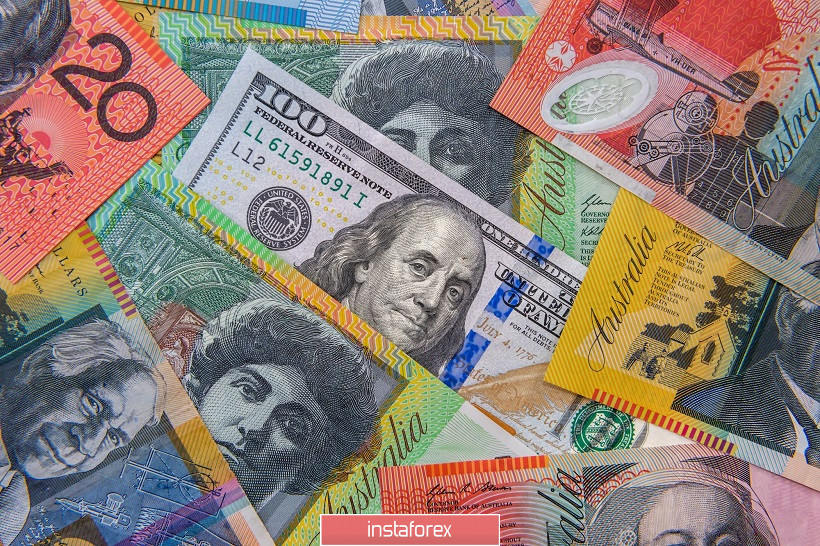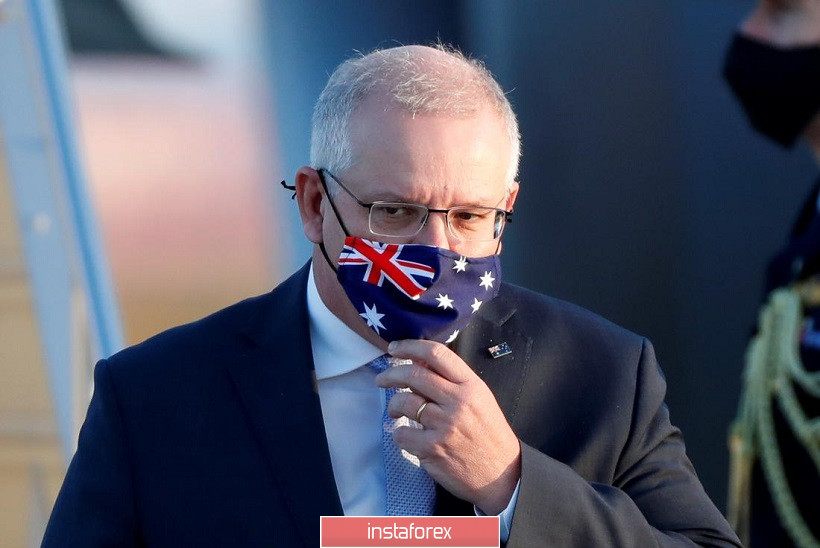The AUD/USD pair moved within the 0.74 mark, finally consolidating in this price area. Buyers of this pair have been trying to reach this price level since November, but the pair attracted sellers upon breaking the level of 0.7400, as a result of which the price returned each time. However, last week's fundamental outlook was in favor of the AUD, while the USD was still showing its weakness. The combination of these factors allowed the pair's bulls to enter the area of the level of 0.74 and take a wait-and-see position. In turn, bears' attempt yesterday to pull the price back below 0.7400 was unsuccessful. So, while the US dollar had a temporary strengthening, the Australian dollar regained its lost positions this afternoon.

In general, the pair has been showing an upward trend over the past few weeks (in particular, since mid-November), together with deeper corrective pullbacks to allow traders to buy again at a better price. Moreover, the growth of the AUD/USD pair is not only due to the weakness of the US dollar, as the Australian one has its own arguments for revaluation. This is an important fact that allows the AUD to control the attack of the AUD/USD bears, during the US dollar's temporary strength. Yesterday's price dynamics served as a good example.
On one hand, we have the Australian and macroeconomic statistics, RBA's wait-and-see attitude, the favorable situation with the COVID-19 in the country, as well as the general interest of the currency market in risky assets. On the other hand, we have the Australian-Chinese political conflict and RBA head, Philip Lowe's cautious rhetoric.
For example, remarkable data on Australia's economic growth was published last week. In quarterly terms, the country's GDP in Q3 increased from -7% to 3.3%. This indicator has grown at the fastest pace in the last 44 years, although the largest state in the country (Victoria) was in a strict lockdown during this period. If this region were also operating, then the volume of Australia's GDP would increase by approximately 5%. Moreover, there was quite good data on the labor market published a little earlier. Australian inflation did not disappoint either – the main indicators came out either at the level of forecasts, or exceeded the forecast values.
In other words, key macroeconomic reports favored the Australian dollar, providing background support to it. It is also worth noting the fact that the Reserve Bank of Australia confirmed its wait-and-see position during its last meeting this year, while excluding the option of reducing the interest rate to the negative area.
However, RBA's head Philip Lowe, who speaks too cautious rhetoric, acts as a kind of a barrier for the impulsive growth of the AUD/USD pair. He repeated his main arguments yesterday, which he had already reiterated earlier. In particular, Lowe paid attention to weak wage growth, high underemployment and weak inflation dynamics. In light of these circumstances, he allowed the expansion of the incentive program next year.
Nevertheless, such threats do not allow the pair's bulls to show their full character, at least in regards with impulse attack to the level of 0.75. Thus, AUD/USD buyers have to cooperate, while attempting to reach the unyielding resistance level of 0.7470.
The Australian-Chinese conflict, which is fading and then flaring up with renewed strength, is also one of the factors which limits the growth of the Australian dollar. For example, a Chinese Foreign Ministry official tweeted a fake photo of an Australian soldier threatening an Afghan child with a knife in late November. There was another scandal, but it quickly faded. Moreover, Australian Prime Minister Scott Morrison suddenly expressed his intention to establish constructive contacts with China, emphasizing that relations with Beijing on the basis of mutual benefit will help both countries.

In general, if this political conflict is considered in the context of the AUD/USD prospects, then it is necessary first to monitor Beijing's attitude to Australian iron ore – China buys about 65% of the iron ore and about two-thirds of this comes from Australia. At the same time, the export of these raw materials from Australia in the last fiscal year amounted to more than 100 billion Australian dollars, which is about half of the total value of all commodity exports.In other words, this is a very sensitive issue for the Australian dollar. But despite all the heated tension, China does not use this lever as a tool for political pressure. As long as the status quo remains in this issue, the conflict itself will have a weak (background) pressure on the AUD/USD pair.
Thus, the current fundamental background for the AUD/USD pair allows us to consider long positions on price declines. The first, and so far the main upward target is the resistance level of 0.7470 (upper line of the Bollinger Bands indicator on the daily and weekly time frames).
 English
English 
 Русский
Русский Bahasa Indonesia
Bahasa Indonesia Bahasa Malay
Bahasa Malay ไทย
ไทย Español
Español Deutsch
Deutsch Български
Български Français
Français Tiếng Việt
Tiếng Việt 中文
中文 বাংলা
বাংলা हिन्दी
हिन्दी Čeština
Čeština Українська
Українська Română
Română

